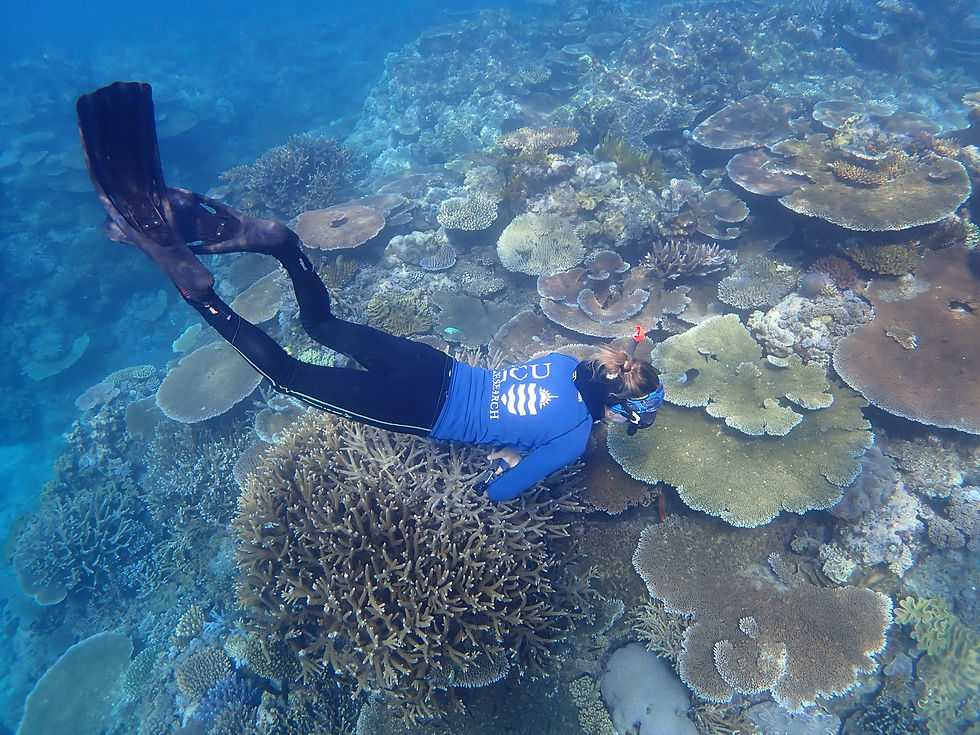Explainer: Coral recruitment
- emmarehn5
- May 13
- 2 min read

How do corals reproduce?
Corals reproduce in two main ways: spawning and brooding.
Spawning corals release bundles of eggs and sperm into the water, where fertilisation occurs. The resulting embryos develop into larvae that drift for days to weeks before settling onto reef or rubble and forming a hard skeleton as they grow into young coral colonies.
Brooding corals fertilise eggs internally within the parent colony. Sperm released by nearby colonies is ingested through the polyp’s mouth, and the parent then releases mature larvae, which typically settle close to their origin.
What is coral recruitment?
Coral recruitment refers to the process where coral larvae settle onto a surface, survive, and grow for the first 8-12 weeks of their lives.
Coral reefs worldwide face increasing threats including heatwaves and mass bleaching, cyclones, flood plumes, and outbreaks of coral-eating Crown-of-Thorns starfish. Under such pressures, successful coral recruitment is more crucial than ever for reef recovery.
How do we measure coral recruitment?
Newly settled corals are microscopic, making them nearly impossible to see directly on the reef. Scientists use artificial surfaces – settlement tiles or plates – that mimic the reef that can be removed two to three months after spawning for examination under a microscope in the lab.
Counting coral recruits on the tiles provides an estimate of the average density of recruits at a given reef site.
How are our scientists studying and boosting coral recruitment?
Our researchers are leading a collaborative study with tourism operators, Indigenous Rangers, NGOs, and other community volunteers to track long-term coral recruitment trends in the Cairns and Port Douglas region using settlement tiles. This is helping to fill critical knowledge gaps in how reefs in the region are faring under increasing pressures and will inform managers and decision makers aiming to enhance early stages of reef recovery.
The team has also been part of collaborative efforts to harness spawn in laboratory settings and floating nurseries on the reef to generate millions of coral larvae for settlement – this is called coral seeding. Recent work has focused on settling larvae on artificial settlement devices in the lab, protecting young coral recruits from herbivores and other threats during their most vulnerable early weeks before being deployed to reefs in need.
Ongoing research is critical to understanding long-term survivorship of coral recruits through various coral seeding techniques – and to determine whether boosting the number of coral recruits results in more adult colonies contributing to reef health and recovery.
Related projects:











